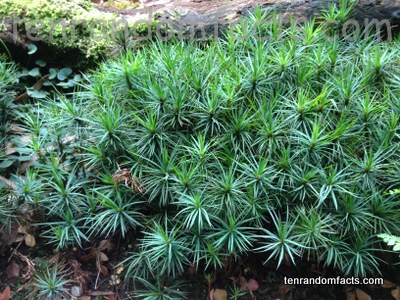Giant moss appears to be a typical plant, but it bears no flowers or seeds.
- Giant moss is a species of tall moss native to eastern areas of Australia, and also New Zealand and New Guinea.
- ‘Giant moss’ is also known as ‘tall Dawsonia’, and as a moss plant, it is ‘non-vascular’, in that it does not have ducts that hold or transport fluid.
- The scientific name of giant moss is Dawsonia superba and it is from the family Polytrichaceae, the family of Aloe moss.
- Each erect spike or stem of giant moss is an individual plant, and the leaves are small and a green to grey-green colour.
- Giant moss is found in clay soils of humid forest habitats, including rainforests.
- Reaching up to 60 centimetres (2 feet) in height, giant moss is the tallest known extant moss on earth.
- Full shade, in dry to moist soils, is the best condition for growing giant moss, and it is able to be grown in pots.
- Extremely small spores that are six to ten micrometres (each micrometre measuring 0.001 of a millimetre) in diameter, making them some of the smallest spores of any moss plants, are produced by giant moss.
- Giant moss produce capsules, that have hairs on the exterior, that sit above the leaves; and the capsule contains spores that are used by the plant to reproduce.
- Raindrops falling onto giant moss collect the plant’s spores and disperses them for reproduction, on the forest floor.
Bibliography:
Dawson superba (Giant Moss), 2016, T.E.R.R.A.I.N, http://www.terrain.net.nz/friends-of-te-henui-group/local-mosses/giant-moss-dawson-superba.html
Dawsonia superba, 2010, Welcome to Yarra Ranges, http://fe.yarraranges.vic.gov.au/Residents/Trees_Vegetation/Yarra_Ranges_Plant_Directory/Yarra_Ranges_Local_Plant_Directory/Lower_Storey/Ferns_and_Fern_Allies/Dawsonia_superba
Dawsonia superba, n.d, Biota, http://bio113.weebly.com/dawsonia-superba.html






